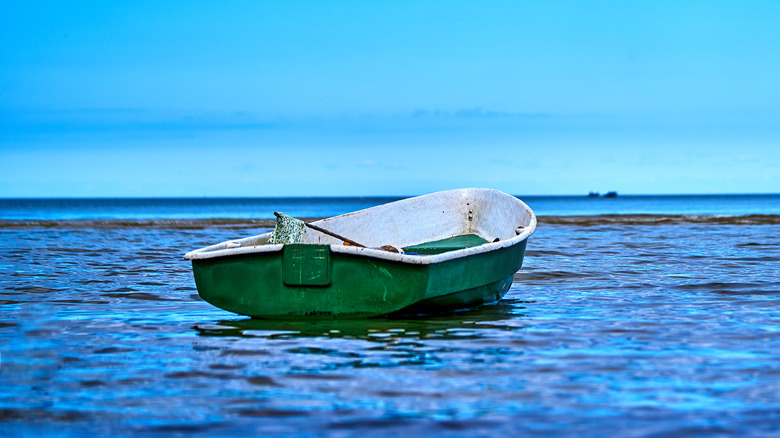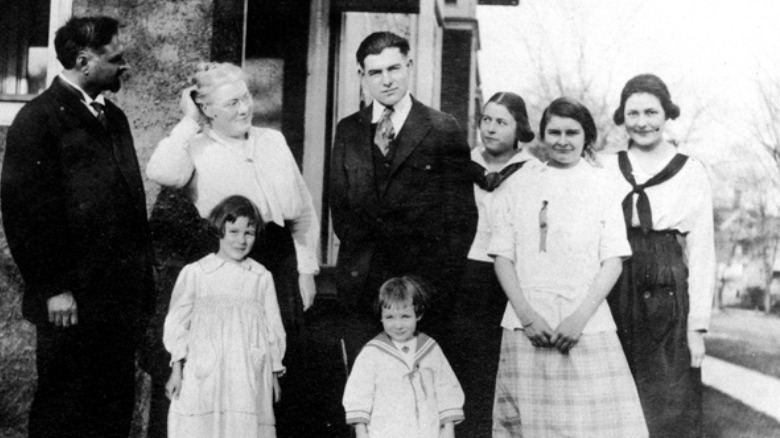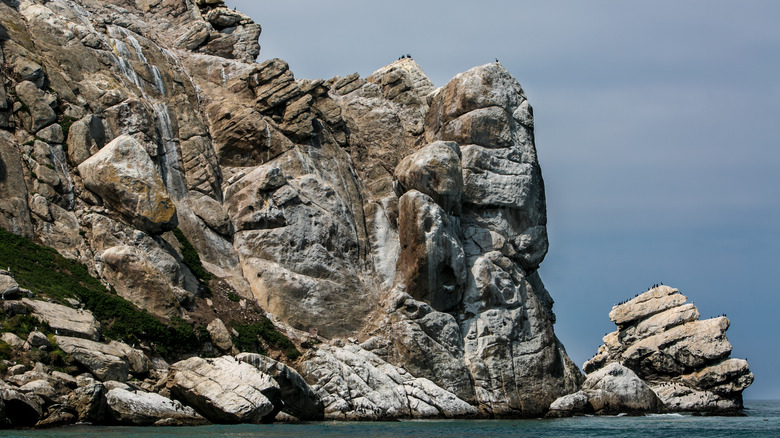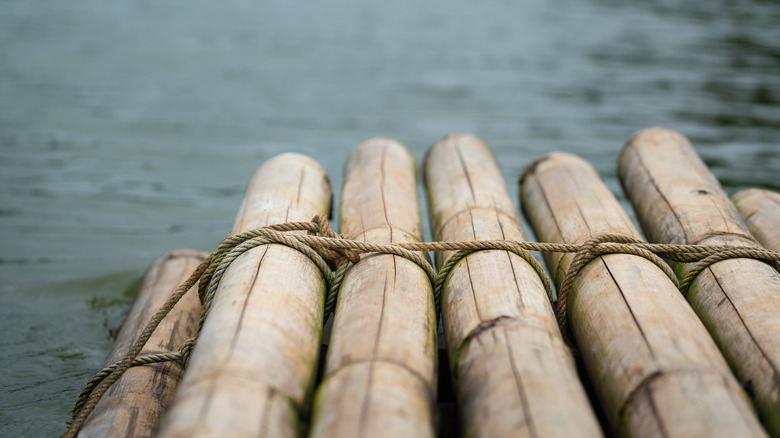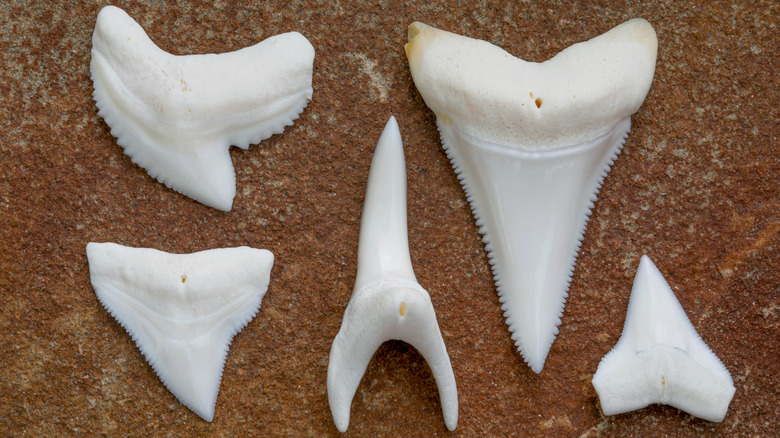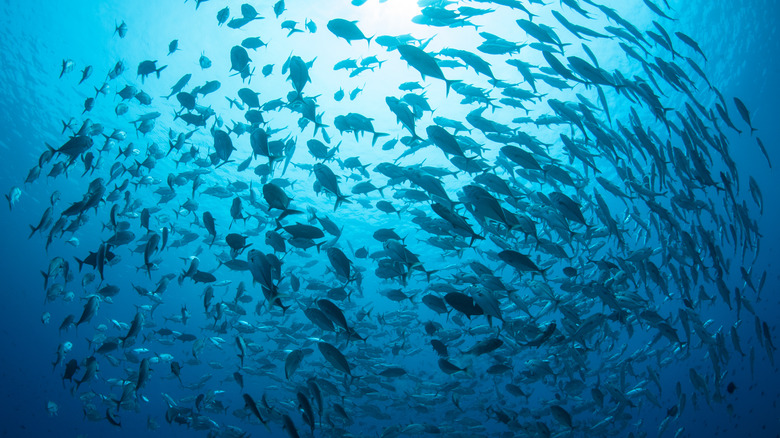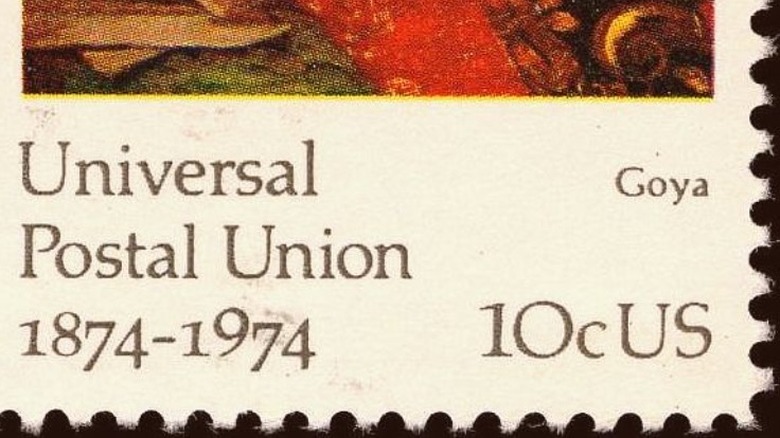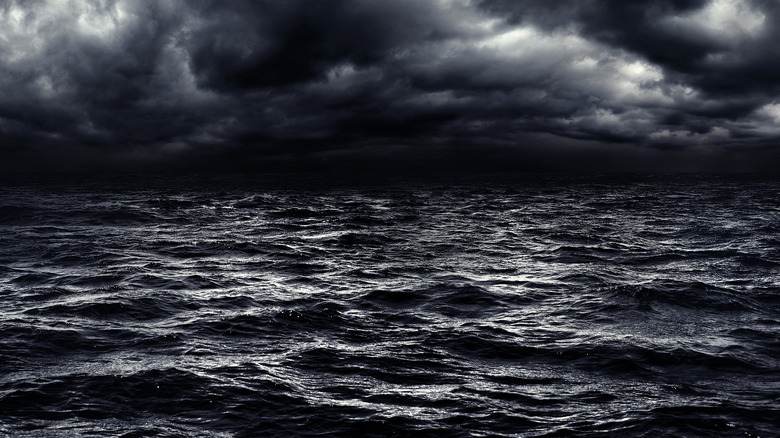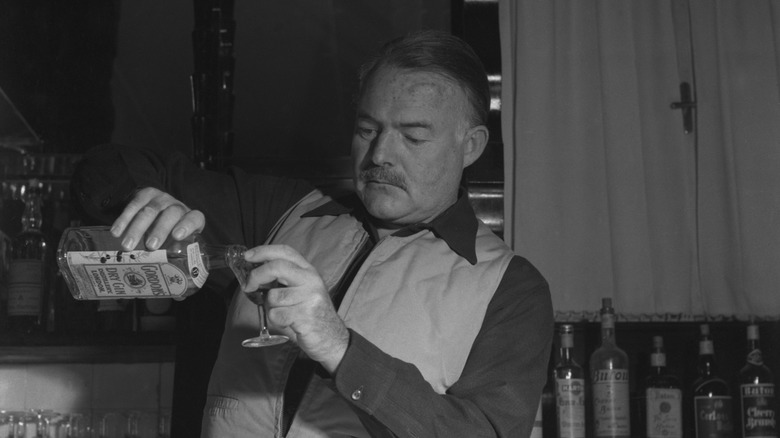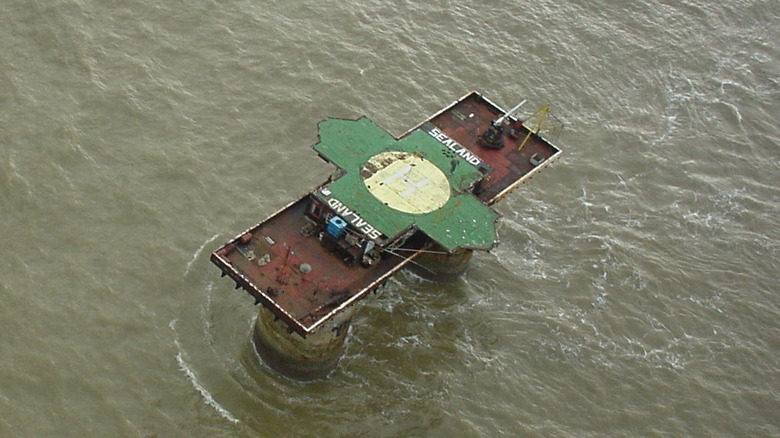New Atlantis: The Crazy True Story Of The Micronation
Everyone knows about Ernest Hemingway, but what about his younger brother Leicester? Leicester idolized his older brother and is most well-known for writing the biography of Ernest, "My Brother, Ernest Hemingway." But Leicester wasn't only a writer. He had much higher aspirations, aspirations that took him roughly eight miles away from Jamaica, in international waters.
There, Leicester founded the micronation of New Atlantis. He either based the name of his micronation on the novel by Sir Francis Bacon or the mythological city mentioned by Plato. But regardless of the inspiration, New Atlantis fell short of being a thing of legends.
But the way that Leicester managed to claim New Atlantis is another matter. Although the law had never been used in such a manner, if not for a U.S. law about poop, Leicester would never have been able to found his own micronation. This is the crazy true story of the micronation New Atlantis.
Who was Leicester Hemingway?
Leicester C. Hemingway (the small boy pictured above) was born on April 1, 1915, in Oak Park, Illinois, to Grace Hall and Clarence Edmonds Hemingway. Hemingway had five other siblings, one of whom would become known as the famous writer Ernest Hemingway. The University of Texas at Austin writes that Leicester, 16 years younger than Ernest, was also an outdoorsman and a writer. Throughout his life, he wrote a number articles about fishing and other activities, as well as several books.
According to "Stuff You Missed in History Class," Leicester talked to Ernest about his desire to be a writer, and although Ernest was supportive, he told Leicester that while he could give him advice, he didn't want to do anything beyond that. Ernest even said to his brother, "Everything you do, they'll say you're writing on my reputation. You know that don't you?"
In 1953, Leicester published his first novel, "The Sound of the Trumpet." A semi-autobiographical work, "The Sound of the Trumpet" was based off of Leicester's time in Germany and France during World War II. "Dictionary of Real People and Places in Fiction" by M.C. Rintoul notes that Leicester served in Europe in a "documentary film unit."
Leicester Hemingway's writing career
While "The Sound of the Trumpet" received some praise, most people generally thought that Leicester Hemingway was trying to thrive off the shadow of his brother Ernest. Even The New York Times ran a review that described Leicester as being "part of the first younger generation shaped by the writings of Ernest Hemingway," according to the University of Texas at Austin.
In "Hemingway's Humor," Jeffrey Meyers writes that the character Rando Graham was based on Ernest. However, Ernest didn't seem too fond of the novel, calling it "a chickensh*t abortion filled with the worst crap I have ever read. The few good parts were like ripe plums in vomit."
Leicester's most famous book is his biography of Ernest, "My Brother, Ernest Hemingway," published in 1962. According to Crossroad Press, Ernest was much more pleased with this test, but he asked Leicester not to publish the book until after Ernest had died.
Ransom Center Magazine notes that although Leicester wrote five novels throughout his life, "The Sound of the Trumpet" was the only one to ever be published.
What was the Guano Islands Act of 1856?
In 1844, guano, also known as dried bird or bat feces, was shipped to the United States for the very first time. The first shipment amounted to 700 tons, but within a decade, the United States was using hundreds of thousands of tons for both fertilizer and gunpowder, per Vox. However, the U.S. government kept getting involved in diplomatic disputes involving white Americans trying to claim islands.
As a result, the United States passed the Guano Islands Act in 1856, which gave U.S. citizens the right to claim and mine any island where "a deposit of guano" is discovered, provided that it is not "within the lawful jurisdiction of any other government, and not occupied by the citizens of any other government." According to "The Geography, Nature and History of the Tropical Pacific and its Islands" by Walter M. Goldberg, under the Guano Act, 94 atolls, islands, cays, and rocks were claimed by the United States. Some of the claims ended up being withdrawn, while others become territories.
According to law professor Christina Duffy Burnett, the Guano Islands Act "arguably laid the legal groundwork for legal imperialism" (via Cabinet Magazine). And because the bill was vague, calling the places "possessions" rather than "territories," it avoided "implied constitutional entanglements" and any responsibility related to that area. The Center for Land Use Interpretation notes that the Guano Island Act was how the United States claimed its first piece of the Kingdom of Hawaii.
So what was New Atlantis?
It was using the Guano Islands Act of 1856 that Leicester Hemingway founded his own micronation on July 4, 1964. But Hemingway didn't show up on a landmass and declare it as his own. Instead, according to Ransom Center Magazine, Hemingway founded his island nation of New Atlantis on an 8ft x 30ft bamboo raft that he anchored onto an old Ford car engine that he dropped into shallow waters 8 miles off of Jamaica southwestern coast.
The University of Texas at Austin writes that Hemingway used all of the money he made from "My Brother, Ernest Hemingway" to pay for his New Atlantis project. And although the "island" ended up being smaller than Hemingway had envisioned, there were plans to expand it in the future. In an interview with The Washington Post, Hemingway asserted, "There's no law that says you can't start your own country."
Under the Guano Islands Act, Hemingway declared that half of his island was New Atlantis, while the other half "belonged" to the United States government, per Mental Floss.
The governance of New Atlantis
Leicester Hemingway even wrote a constitution for New Atlantis. But according to "Stuff You Missed in History Class," he mostly just used the U.S. Constitution and replaced "United States" with "New Atlantis" everywhere. However, the changes he did incorporate were fairly significant.
"Surveying the American Tropics" notes that while New Atlantis' stated purpose in its preamble is incredibly similar to that of the United States Constitution, it doesn't include the reference about "provid[ing] for the common defense," as the U.S. Constitution does. In addition, the "abstract ambition" of a "perfect union" is replaced with "perfect government." Because of the wording in the U.S. Constitution, the phrase has always been interpreted to mean that maintaining the Union took precedence over all else. With his change, Hemingway "signal[ed] a particular change in purpose and emphasis."
It wasn't long before the United States claimed the northern part of Hemingway's raft under the Guano Act.
Who lived on New Atlantis?
Since Leicester Hemingway had founded New Atlantis as a republic, the micronation held its first elections seven months after its creation. But who was even there to vote? In addition to Leicester Hemingway, there were five other inhabitants of New Atlantis.
Doris Hemingway, Leicester's wife, and their two daughters, seven-year-old Anne and three-year-old Hilary, joined Leicester on New Atlantis. In addition, Edward K. Moss, a PR specialist, and his assistant Julia Selene were also considered part of the original inhabitants of New Atlantis, per the University of Texas at Austin. And in February 1965, Leicester was unanimously elected president in the first elections of New Atlantis, though most likely just by those who were of eligible voting age.
In neighboring Kingston, Jamaica, a front-page six-column article was dedicated to New Atlantis' first elections. And according to "Stuff You Missed in History Class," Leicester was soon giving interviews about his new nation, claiming that "his new country was peaceful and had no intention of threatening its neighbors."
Doris created the New Atlantis flag (pictured), and writer Brian Heater notes that Doris actually had to make three flags in total because they kept being stolen by local fishermen.
Money in New Atlantis
The national currency of New Atlantis was called the "Scruple," referring to the feeling of hesitation on grounds of conscience, per Merriam-Webster. Leicester Hemingway named his currency this was because he thought that "the rich should have many scruples," according to Ransom Center Magazine.
Scruples weren't printed currency or based on any kind of standard. Instead, Scruples included items that Hemingway had slightly altered, like a shark tooth, a fishhook, and a carob bean. According to "Surveying the American Tropics," a smaller shark tooth amounted to a half-Scruple, whereas drilling a hole through a carob bean would yield you a 100th of a Scruple, which was equivalent to 2 Centes. (Yes, "Centes.")
However, Hemingway's found currency couldn't pay his own bills, so he was frequently trying to seek out new citizens. The Miami New Times reports that Hemingway tried to entice people with a New Atlantic citizenship in various bars. He would even offer up titles in exchange for investments in his micronation.
Why did Hemingway form New Atlantis?
Ultimately, Leicester Hemingway didn't found New Atlantis just so he could be the ruler of his own country. The University of Texas at Austin writes that Hemingway's underlying purpose was to create a place where the International Marine Research Society, a society Hemingway himself had founded, could be based.
The International Marine Research Society was concerned with raising funds for and furthering marine research in addition to building an aquarium in Jamaica. Hemingway was also under the impression that by creating New Atlantis, he'd able to "help protect Jamaican fishing."
In the end, this stated aim seemed to give the Jamaican government reason not to oppose the New Atlantis endeavor. In September 1964, a spokesperson for the Jamaican Embassy even described Hemingway to the New York Herald Tribune as a "decent, well-meaning soul" (via Ransom Center Magazine). Meanwhile, the United States government gave its impassive approval, and when Hemingway reportedly received a note from the White House that referred to him as acting president, it was as close to official recognition as he was going to get.
So how was New Atlantis going to help build an aquarium and raise money? The micronation got into the stamp industry.
The stamps of New Atlantis
In addition to using the currency of New Atlantis, Scruples, to help raise money for marine research, Leicester Hemingway planned to use the sale of New Atlantis stamps to fund his research endeavors in Jamaica. Ransom Center Magazine writes that Leicester printed New Atlantis stamps in 1964 and 1965.
The stamps were featured in five different denominations. The first stamp of New Atlantis, the 100 Centes stamp, even honored President Lyndon B. Johnson as the "protector of the entire free world," according to "Surveying the American Tropics." The 40 Centes stamp honored the U.S. 4th Infantry Division, with whom Leicester's brother Ernest spent considerable time during World War II. Leicester also planned on making a stamp to honor the United States' 1965 intervention in the Dominican Civil War.
Unfortunately, the Universal Postal Union, an agency of the United Nations, ultimately didn't recognize the legitimacy of New Atlantis or the stamps that it was producing. And without the recognition of the Universal Postal Union, New Atlantis' stamps were virtually unusable.
What happened to New Atlantis?
New Atlantis only lasted a few years. Although Leicester Hemingway had plans to fortify and expand New Atlantis, a storm in 1966 untethered his young micronation and sent it drifting out to sea. But because New Atlantis had caught the attention of librarian Mary M. Hirth, several of its artifacts and stamps had been preserved and were left unharmed by the devastating storm, per Ransom Center Magazine.
Leicester never lost hope in his micronation. According to the Miami New Times, up to 1980, he continued to speculate that New Atlantis was "probably floating somewhere near Haiti." But little came of it, and Leicester went back to writing, publishing a fishing newsletter named The Bimini Out Islands News, per "New Atlantis," but before long, he was experiencing circulatory problems due to diabetes.
Leicester died on September 13, 1982, by suicide. In Leicester's obituaries, his brother Ernest was still the center of attention. In the Connecticut Review, he was even commended for managing to "accommodate himself manfully" to being constantly overshadowed by his elder brother, per Ransom Center Magazine.
Suicide in the Hemingway family
Although the suicide of Ernest Hemingway was the most famous, he wasn't the only member of the Hemingway family to die by suicide. According to Distractify, in addition to Leicester and Ernest, their father Clarence also killed himself when they were 13 and 29, respectively. Financially insecure and suffering from severe diabetes, Clarence also experienced mood swings of unpredictable depression. And upon learning of his father's death, Ernest would write, "I'll probably go the same way." Ursula Hemingway, Leicester and Ernest's sister, also committed suicide in 1966, per The New York Times.
Ernest's granddaughter, Mariel Hemingway, believes that there's a "horrible curse" on the family, because the suicides continued into the next generation. Margaux Louise Hemingway, another one of Ernest's granddaughters, died by suicide on July 1, 1996, after years of battling depression and addiction, according to Democracy Now. In total, Mariel states that there are up to seven known suicides that occurred in the Hemingway family.
If you or anyone you know is having suicidal thoughts, please call the National Suicide Prevention Lifeline at 1-800-273-TALK (8255).
What other unrecognized micronations are there?
There are several unrecognized micronations in the world, and some of them even exist within the United States. Sealand, a sea fort off the coast of Suffolk, England, ruled by Roy and Joan Bates, may be the most notorious out all. In 1978, the Bates family took a group of German and Dutch mercenaries hostage after discovering them in an attempted coup, per the BBC.
According to Fast Company, the West German government was even forced to send someone to negotiate for a hostage. The Bates family claimed that this was a recognition of Sealand's sovereignty, but it didn't stick.
Culture Trip writes that North Dumpling Island, the Kingdom of Talossa, the Republic of Molossia, and the Republic of Zaqistan are some of the unrecognized micronations in the United States. The Republic of Molossia is described as one of the most ambitious and was one of the earliest places to recognize Kosovo as an independent nation. Molossia is also currently at war with East Germany. According to the micronation's website, "Plans are being drawn up to deal with any threat, no matter small, that the long-dead but still extant Communist nation may bring against us."
